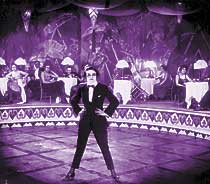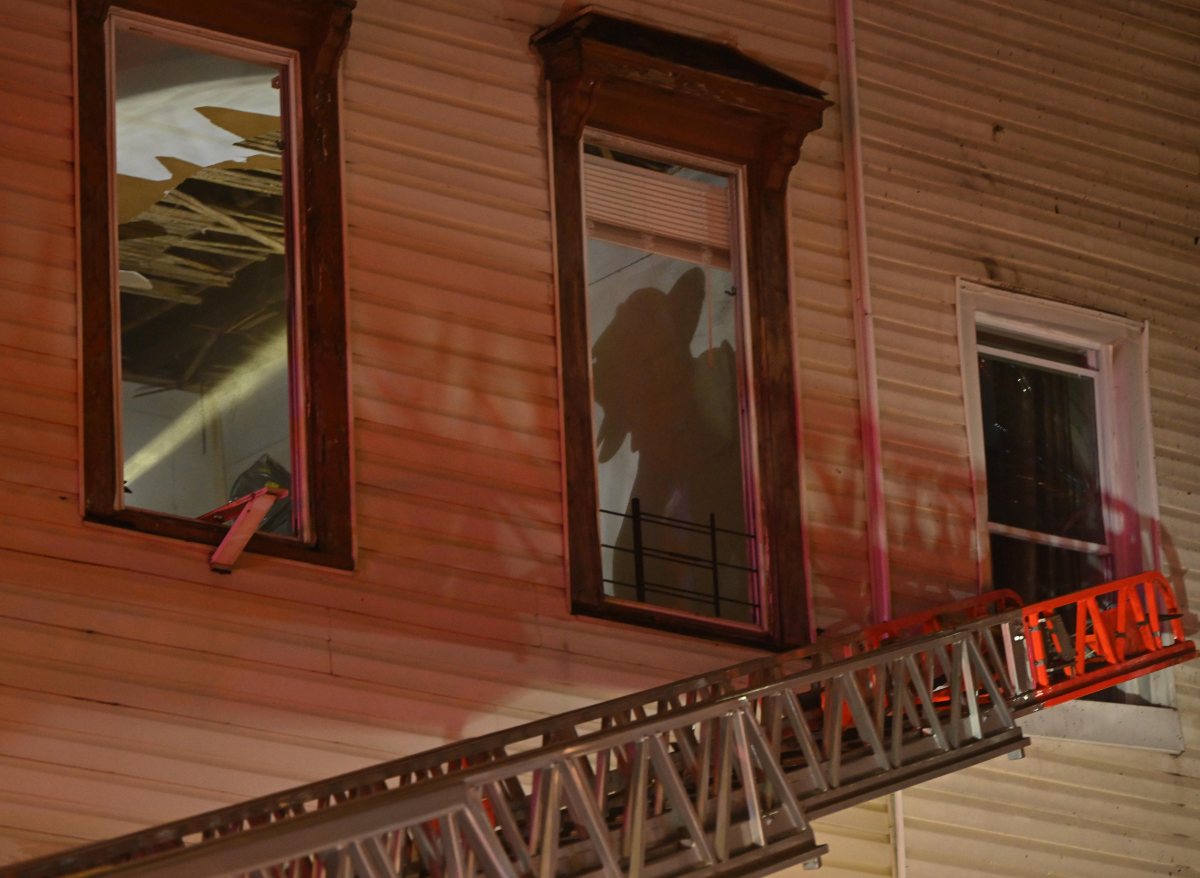In 1933, Fritz Lang found himself summoned for a meeting with
Joseph Goebbels, the Third Reich’s propaganda minister. Goebbels
offered him the leadership of the German film industry, which
was to be mobilized in the service of Adolf Hitler’s societal
vision. Before the end of the year, Lang fled to the United States.
In some respects, Goebbels’ choice was an odd one. Fritz Lang
was a force in German "Expressionist" cinema, which
used stark light and shadow and a distinctive stylization of
both the production design and human forms, transforming the
outer world to reflect the (often grim) inner one. One could
easily see the Nazis sneering at Expressionism as yet another
example of the "degenerate art" they despised. Furthermore,
Lang’s latest release, "The Testament of Dr. Mabuse,"
had been banned for portraying an insane supercriminal’s reign
of terror as an allegory for the Nazi regime.
Still, who else? Lang (1890-1976) was the foremost director working
in Germany, a film artist with few peers for international renown.
In the late silent era, he had helped lead his country’s cinema
into a Golden Age, the only time in history when it truly competed
with American movies. But the legacy of his years before Hollywood
has been difficult to appreciate fully, as most of the work has
long been seen in woefully incomplete versions.
BAM Rose Cinemas’ retrospective, "Fatal Passion: The German
Cinema of Fritz Lang," running Nov. 1-28, represents a leap
forward. The 10-film series focuses on landmark restorations
of several classics. (Some of the prints are apparently so fresh
they don’t yet have English subitles; the German will be translated
live.) Six of the movies boast a remarkable amount of additional
footage.
"The Nibelungen" (1924) is a two-part blockbuster based
on the 13th century epic poem of Norse gods and heroes. The current
U.S. video edition runs slightly over three hours total; the
one showing at BAM comes to nearly five. (The two chapters, "Siegfried"
and "Kriemhild’s Revenge," play on consecutive evenings,
Nov. 8 and Nov. 9.) For not the first or last time, Lang took
full advantage of the gargantuan resources of Universum Film
Aktiengesellschaft (UFA), Germany’s dominant studio – he and
his designers created forests, mountains, rivers, castles and
armies on the backlot, not to mention effects such as a fire-breathing
dragon, all without a single mouse click.
The restoration is especially well-timed in light of the similarly
ambitious "Lord of the Rings" screen trilogy coming
up. Fans of J.R.R. Tolkien, an author who took inspiration from
the same myths, should find the imagery and story elements familiar.
This is to say nothing of opera goers who love Richard Wagner’s
"Ring" cycle, a group which certainly included Hitler.
Lang unintentionally won the rising demagogue’s favor with his
mythic epic, which Hitler saw as reflecting his racial and cultural
obsessions.
Always one to top himself, Lang came close to bankrupting UFA
with "Metropolis" (1926), a science fiction allegory
of oppression and rebellion, set in a futuristic city-state.
It remains Lang’s most famous work. The monumental visuals exert
an undying influence right up to "Blade Runner," "Batman"
and Madonna’s "Express Yourself" music video.
Its theme of technology used to consolidate the power of the
few over the many becomes more relevant with every passing year,
despite the dated qualities of an often lugubrious scenario by
Lang’s wife and frequent collaborator, Thea von Harbou. Paradoxically,
its intended form has been even more unknowable than usual for
Lang’s silents – it circulates in a bewildering array of different
cuts. The restoration showing at BAM on Nov. 28 is the definitive
one to date, though still short of an original that was perhaps
in the neighborhood of three hours in length.
Such otherworldly visions may have made the filmmaker’s reputation,
but the underworld was the enduring preoccupation of his career,
right from his first commercial success with the 1919 serial
"The Spiders" (not showing in the series). This was
doubly true in Hollywood, where, without the creative control
and behemoth budgets that he had at UFA, crime stories were his
bread and butter. Lang was among the German expatriates who cast
the shadow of Expressionism across American thrillers – a legacy
which haunts the genre to this day.
Series opener "Spies" (1928), for example, is a major
forerunner of countless movies about glamorous secret agents,
seductive femmes fatale, megalomaniac archvillains, invisible
inks, hidden passages and devious disguises. With all that to
pack in, "Spies" admittedly feels a little cramped
– but the restoration literally doubles the amount of footage
and the film clocks in at 175 minutes.
Film historians are fond of reading premonitions of Germany’s
future into Lang’s fondness for megalomaniacs. Certainly he created
one of early cinema’s greatest in "Dr. Mabuse, the Gambler"
(1922) – an endearingly understated way of referring to a man
who uses hypnotism, extortion, disguise, and murder in his climb
to power. ("Dr. Mabuse, The Gambler" Part 1 will be
screened Nov. 15 and Part 2 on Nov. 16.) The epic two-parter
a la "Nibelungen" spawned a sound sequel with the aforementioned
"Testament of Dr. Mabuse" (1933), wherein the indefatigable
doctor manages to control his criminal empire even from within
an asylum cell, and eventually from beyond the grave. "Testament
of Dr. Mabuse" will be screened Nov. 20.
By that time, of course, Lang was ahead of today’s critics, having
made his own connections between the mad villain of his fiction
and real ones even he would have scarcely dared imagine.
"Fatal Passion: The German Cinema
of Fritz Lang" will be screened at BAM Rose Cinemas (30
Lafayette Ave. at Ashland Place) Nov. 1-28. For complete schedule
of dates and times, go to www.bam.org. Tickets are $9, $6 for
students and seniors. For more information, call (718) 636-4100.



















